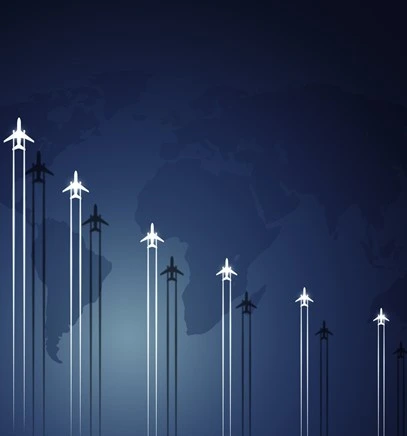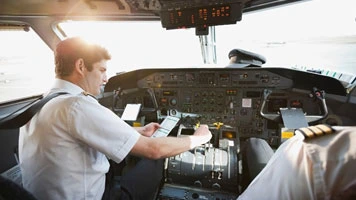Future Outlook of Indian Aviation

India's aviation sector is set for remarkable growth, with plans to add 4,000 new aircraft and develop 200 additional airports over the next 20 years. To support this expansion, the government is investing $11 billion in airport infrastructure, with a target of 200 operational airports by 2025.
The future of India's aviation industry is promising, driven by rapid economic growth, a rising middle class, and an increasing demand for both domestic and international air travel. With strong government support, technological innovations, and investments in infrastructure, the sector is well-positioned for continued development and transformation.
Key Trends and Developments
Passenger Traffic
- Domestic air traffic is projected to reach 164– 170 million passengers by 2025, while international passenger volumes are expected to rise to 34–36 million.
Economic Growth
- India’s GDP is projected to continue growing at a rate of 6.5–7% annually for the remainder of this decade.
Fleet Expansion
- Indian airlines are expanding their fleets, with Air India’s merger with Vistara and an order for 100 Airbus jets, while IndiGo is also growing its fleet
Airport Infrastructure
- The government plans to invest $11 billion in airport infrastructure, aiming for 200 operational airports by 2025. The number of operational airports has increased from 74 in 2014 to 157 in 2024, with the target of reaching 350– 400 by 2047.
Technological Advancements
- India is adopting cutting-edge technologies, such as biometric screening and contactless check-in, boarding, and security clearance systems, to enhance the passenger experience.
Key Growth Drivers
- Economic Growth: India’s robust economic growth is expected to persist, leading to higher disposable incomes and greater affordability for air travel.
- Expanding Middle Class: The growing middle class is a significant contributor to the rising demand for air travel, both for leisure and business.
- Government Initiatives: Programs such as the UDAN scheme are enhancing regional connectivity and making air travel more accessible to smaller cities and towns.
- Tourism Growth: Both domestic and international tourism are on the rise, further driving the demand for air travel.
Challenges
- Infrastructure Constraints: Although significant investments are being made, infrastructure development must keep up with the rapid growth of the aviation sector.
- High Operating Costs: Rising fuel prices, taxes, and other operating expenses could impact airline profitability.
- Increased Competition: The Indian aviation market is becoming more competitive, with both domestic and international airlines competing for market share.
- Skilled Workforce: There is an ongoing need for skilled pilots, engineers, and other aviation professionals to support the industry’s growth.
Key Projections
- India is expected to become the third-largest aviation market globally by 2030.
- The number of air passengers is projected to grow significantly in the coming years.
- The aircraft fleet is expected to double in size over the next decade.
- Significant investments are anticipated in airport infrastructure and related sectors.
Overall Outlook
- Despite the challenges, India’s aviation sector is expected to maintain a strong growth trajectory, propelled by favorable demographics, sustained economic growth, and government backing. India is on track to become one of the world’s largest aviation markets in the coming years.











